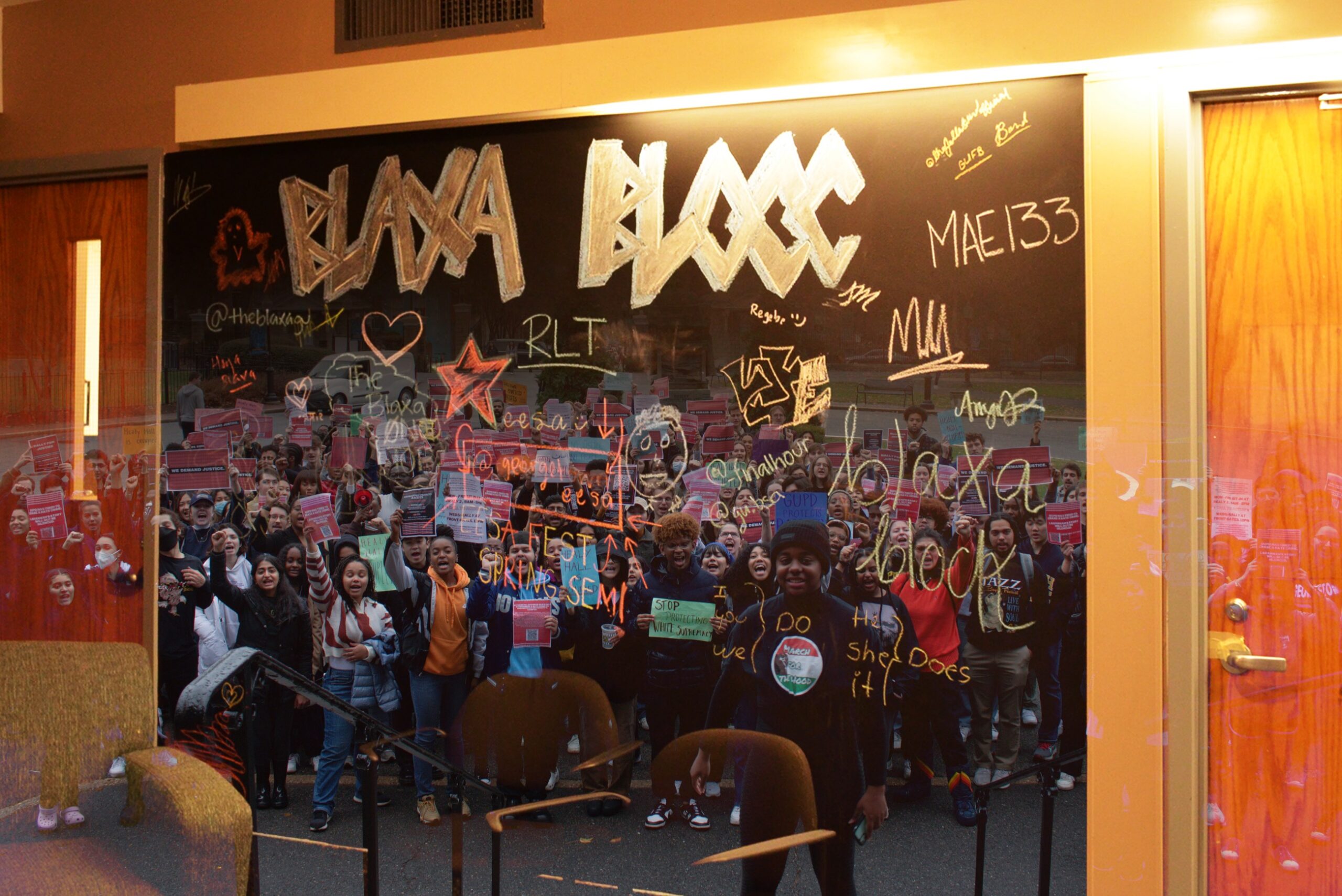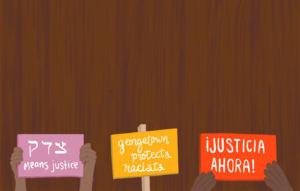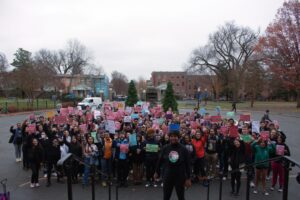Content warning: This article discusses anti-Black hate speech and systemic violence.
When LaHannah Giles (CAS ’23) experienced a racist hate crime on Georgetown’s campus in April 2022, they felt like they had nowhere to go.
“I’m thinking back to when I was in crisis mode,” Giles told the Voice, referring to the day they experienced the hate crime. “It was on Georgetown Day. The Black House wasn’t open because they had limited hours and obviously the students who were in the house were out, and I had nobody to process the hate crime with.”
“This won’t be the last time something like this happens,” they continued. “Where do people go to process these types of things?”
Backed by the newly-formed Georgetown Protects Racists (GUPR), a coalition of student organizers, Giles successfully pressured the university to address some of their concerns and provide increased institutional support for Black students. On Sept. 30, students celebrated the opening of a new Black student affinity space called the Blaxa Block in the former LXR multipurpose room, meeting one of GUPR’s 11 demands.
In an Oct. 6 email to the residents of LXR and Nevils, Assistant Vice President and Chief of Staff of Student Affairs Stephanie Lynch described the Black Student Affinity Space as a place where “students can meet, connect and celebrate perspectives that are unique to the BIPOC Community.” Intended to serve the needs of Black students, the space will remain open to all students regardless of race or ethnicity, in accordance with Georgetown University’s non-discrimination policy.
In February 2023, Vice President of Student Affairs Eleanor Daugherty convened a working group to explore affinity space options in response to GUPR’s organizing. Jaden Cobb (CAS ’25), a regular attendee of GUPR sit-ins and GUSA’s Director of Equity and Inclusion at the time, was asked by Daughtery to join the working group. From there, Cobb helped Daugherty identify other Black student leaders, such as Melody Emenyonu (SOH ’24), to participate in these discussions.
As the primary students organizers behind Blaxa Block, Cobb and Emenyonu worked closely with Daugherty, Lynch, and Director of Georgetown Event Management Services (GEMS) Phylander Pannell. Cobb and Emenyonu emphasized that these three administrators played a crucial role in making Blaxa Block a reality.
Emenyonu reflected on the opening of Blaxa Block as a milestone for Georgetown’s Black community as a senior who attended Georgetown through its COVID-19 closing.
“I think that Covid did such damage to the community that [Blaxa Block] is such a huge marker of healing,” Emenyonu said. “I think that this space–it is exactly celebratory. It is the definition of celebration.”
Cobb and Emenyonu see the opening of Blaxa Block as an achievement, but they are not fully satisfied with its current location. Because they wanted Blaxa Block to open as soon as possible, they accepted LXR as the best short-term option administrators could provide.
“The LXR Blaxa Block is very much, 100 percent temporary,” Cobb said. “This is not the permanent spot that will be for years to come, so we’re looking for a more centrally located spot that’s more accessible for students.”
Prior to Blaxa Block’s opening, the Black House served as the only designated space for Black students to gather on campus. And while it has long served as a cornerstone of Georgetown’s Black community, the Black House is also a residential building that houses five students.
“It’s students running the space—they’re students—they can’t dedicate all of their time and energy to the community,” Giles said. “That’s a living space.”
Since Black House’s founding, Georgetown’s Black student population, roughly 30 in 1970, has grown significantly. Today, Black students make up 7% of Georgetown’s roughly 7,500 undergraduates. According to Giles, Cobb, and Emenyonu, the Black House was simply no longer sufficient to meet the needs of hundreds of Black students.
Blaxa Block aims to give students a dedicated communal space that will alleviate some of the burden on residents of the Black House, according to Emenyonu. Since Blaxa Block’s opening, student organizations like the Black Student Alliance, Black Leadership Forum, Blaxa, and Black Student-Athlete Coalition, have been able to host events in the space.
In a full circle moment, students invited Giles, now graduated, back to campus for the opening of Blaxa Block in September. “I felt very emotional, but in a happy, emotional way,” Giles said. “It was really good to see them all take advantage of the space, used how it was meant to be.”
Moving forward, Giles hopes that future Hoyas remember the hard work of student organizers that made Blaxa Block possible.
For Emenyonu, Blaxa Block is a testament to the power of continuous student advocacy. “This space is just a marker that the community is here and that we’re here to stay, and that we’re only growing.”
Find our previous coverage on GUPR’s advocacy, including the initial sit-in protests, here.





